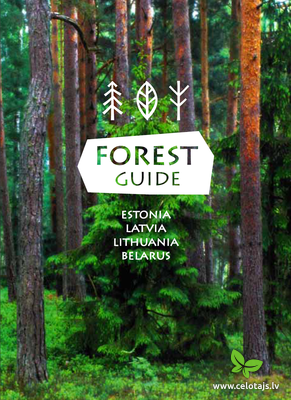"Forest Guide" - Latvia, Estonia, Lithuania, Belarus
07/19/2012
The Baltic Sea region is the most afforested territory in all of Europe. The forest is an inviolable component of the Northern European landscape and cultural environment. Forests and trees have served as sources of inspiration for people over the course of ages, leading to countless legends, stories, fairy tales and riddles as a very important part of the intangible folklore heritage of Northern European peoples. Neither can it be denied that the forest has always been an important source for timber and non-timber (mushrooms, berries) resources in the economies of the lands which encircle the Baltic Sea.
We want every one of you to learn about the forest and the diversity of the kingdom of plants and animals, and so the rural tourism association “Country Traveller” has joined together with the Latvian Fund for Nature and the Belarusian Rural Tourism Association to implement a project co-financed by the European Union, “AGORA 2.0.” This informational and educational guidebook about the forests of the Baltic States and Belarus has been prepared under the auspices of that project. This guide is meant to allow the reader better to learn about the unique aspects of our forest and the environmental values that are found therein.
What will you find in this guidebook?
“The History of the Forest”: The development of the forest since the last Ice Age
“Why are Our Forests Interesting?”: Things to focus on when you’re in the forest
“The Forest and the Four Seasons: The forest is great not just during the summer
“Frequently Encountered and More Unique Forests”: Descriptions and photos
“Helping You to Identify Species: Some 400 frequently seen mushrooms, plants and animals, with photos and descriptions that will allow you to recognise them out in the wild
“Worth Seeing!”: The most interesting national parks, nature parks and other territories where we can go on informational tours to learn about the forest and its denizens
“Important Advice”: Take this into account when setting off on your trip!
“Green Advice”: How to be friendly toward the environment and local residents while you travel
See electronical version of the guide here.
![]()
![]()
![]()
Part-financed by the European Union (European Regional Development Fund and European Neighbourhood and Partnership Instrument)


